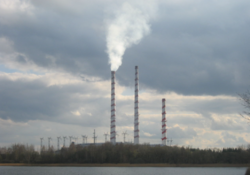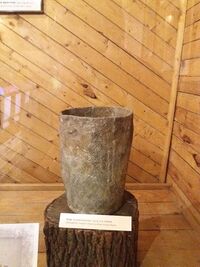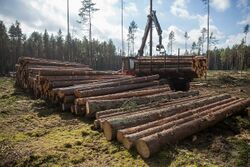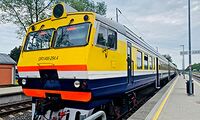Baltica
United Federation of Baltica Jungtinė Baltijos Federacija | |
|---|---|
Motto: “If god is with us, who is against us ?” | |
Anthem: “The New Republic” | |
| Capital | |
| Largest city | Goja, Kauni, Kretia |
| Official languages | |
| Ethnic groups | |
| Demonym(s) | Baltican |
| Government | Federation |
• President | Algridas Banis |
| Legislature | Central Baltican Government |
| State Seim | |
| Territorial Council | |
| Independent | |
• Establishment of the Baltican Federation | 2022 CE |
| Population | |
• 2022 estimate | 14,653,254 |
• 2022 census | 14,690,325 |
• Density | 38/km2 (98.4/sq mi) |
| GDP (nominal) | 2018 estimate |
• Total | 89,809,793,766 |
• Per capita | 6,129 |
| HDI (0.57) | 0.47 low |
| Currency | Baltican Zedas |
| Date format | dd/mm/yyyy |
| Driving side | right |
| Calling code | +252 |
| Internet TLD | .ba |
The United Federation of Baltica, or simply Baltica, is a sovereign state within the continent of Argis. The country is a Federation composed of four Republics (Raskia, Kauni, Liplan-Kretin and Dokestva) and three Sister Republics (Myask, Govir and Belgorta). The United Federation of Baltica is a product of the Second Baltican Civil War, having formed during the conflict. It is a very loose Federation, for the large part still suffering from the cultural divide between Dolch and Ras that led to the war that created it. Currently Baltica has two capitals: the administrative capital in Kauni is home to the Central Government, and Sveaja remains the economic capital of the nation. 14.6 Million people call Baltica home. The majority reside in the largest republic of Liplan-Kretin, home to 5.7 million people or about 40% of the total population.
Baltica is home to many swamps, bogs and wetlands that litter the Baltican east and south. Central Baltica remains home to the Grand Kretian Highlands, a collective of hills and mountains that are the source of many rivers that drain into the Pellucid Sea. The far west of Baltica is fairly temperate, covered in thick forests and many lakes. Three main rivers flow through Baltica, this being the Visagris in the south, the Liplan in the Highlands, and the great Balandeli that runs through Perkunia, and splits the Baltican South from the North. Baltica it self is devoid of many natural materials, but what it does posses is one of the most fertile lands in Central Argis. The Kauni river basin is one of the most fertile regions in the wurld, and has remained Balticas largest bread basket.
Baltica is still recovering from the civil war and as such its economy remains considerably smaller than it was before the war. The current GDP per capita is only 6,129 Zedas, and its total GDP is only 89.8 Billion Zedas. The HDI is a pitiful 0.47, although efforts are being done to fix both the Baltican Economy and bring it back to its former heights.
History
Southern Gentarian Tribes
The first so-called “Balticans' ' were a Southern branch of the Gentarian peoples group. It is believed that a part of the Gentarians had migrated Southwards into Baltica in pursuit of better farmland, eventually settling the warmer coast of the Pellucid Sea. It is believed that around this time the Southern Gentarians split into multiple different culture groups, all sharing some but not all cultural and linguistic features. Primarily this included the Raskians, who inhabited much of the Eastern regions along the Balendeli river, the Kretina who settled the lands just North of the Litauisch peninsula, the Highlanders or Aukshtaitis in the North and finally the Hermaitai who lived directly within the Litauisch peninsula. Despite being somewhat unique from one another, they all spoke mainly two distinct dialects, this being Kretian and Raskian, which both had their “Low” and “High” variations. Additionally all shared common deities and to some extent a faith, although regional differences were seen throughout the entirety of Baltica.
During this early period in Baltican History, the Liplan river was one of the most populated and Important regions within Baltica. It is believed that it was an epicentre of trade and was almost always contested by various smaller clans and chiefdoms. Early coinage, Idols and early weaponry have all been discovered throughout the greater Liplan Basin. It is also believed that the fabled city of “Juralia” rested along the Liplan, mentioned quite frequently throughout the Oral histories of the South Eastern Gentarians. Juralia is often described as “The Home of the Baltican Gentarians”, and the birthplace of the Baltican pagan faith “Takija”. What would happen to Juralia remains a mystery, if it ever existed in the first place that is, but its place at the core of at the time the Baltican heartland explains why it rose to such large prominence during the ancient period.
The most prominent event of this early tribal period is believed to have been a large war, that sprung up from a sudden cold spike resulting in large scale famine in North Eastern Baltica or modern day Ramutia and Kretia region. This war most likely resulted in the large-scale displacement of multiple people within the North, shifting much of the then population away from the Liplan and into other regions of Baltica. Most notably, it is believed that multiple of the Aukshtaitis would migrate southwards into the bay of Goja, eventually going on to establish the city of Goja during the late mediaeval period in Baltica.
Initial Baltican Settlement
Baltica would first be discovered by the Dolch in 1331, after some Dolch merchants were swept away by the strong Westerly winds of the Kezanoi Sea, eventually landing on the Litauisch Peninsula in Southern Baltica. They would remark on the quite warm climate and abundance of trees and berry bushes, specifically grapes. Hence, these first merchants would call this unknown land Traubenland. Upon their return back to Dolchland, the rumours of Traubenland would spread among fellow Dolch merchants, eventually coming into the attention of the church, who organised an expedition into Traubenland, led by the then Bishop Kasimir. Bishop Kasimir and his entourage of 2,000 men would settle the Southern Bank of the Bay of Austen. This first settlement was known as Niden, and grew quite quickly as the locals began cultivating the land, especially for its grapes, which would be fermented into wine and exported back to Dolchland. By 1344, the small town began to grow quite quickly, attracting many people from Dolchland in pursuit of a better life and opportunity.
However, this time of relative peace would come to an end, as in 1348 the Dolch settlers would discover the Hermaitai peoples within the peninsula. At first, the interactions between the Dolch and Hermaitai were peaceful, with the two groups sometimes engaging in trade. This would quickly come to an end once the Dolch began to spread Southwards, as shortly after the construction of the town of Randerwel it would be raided and burned down by a large force of Hermaitai. Bishop Kasimir (who had been bedridden for quite some time) signed one of his last degrees, this being the “Vacation Armajan”, calling for both warriors and men to aid the Dolch in Niden in their fight against the perceived heathen tribes of Traubenland. This decree would attract many to Niden, with one of said groups being the Holy Knights of Lubberlin who dedicated all of their fighting forces to Niden.
Shortly after the arrival of the Knights of Lubberlin, the Dolch launched many raids into Hermaitai lands, especially as Niden had become highly overpopulated and the city was on the brink of starvation. Luckily for the Dolch, the raids provided a temporary food source for the settlers, but it quickly attracted the attention of larger tribes. In 1361, the Dolch would engage in the largest battle of the settlement period, this being “The Battle of Three Rivers”. This saw the Dolch come out on top and expand entirely around the Bay of Austen. The newly conquered lands would be divided between the Holy Knights of Lubberlin (who shortly thereafter would go on to adopt the new name of “Holy Knights of Baltishtin”, with their new patriarch being the then recently passed Saint Kasimir), and the church in the form of Bishoprics, the largest of which remained the Archbishopric of Niden.
Order of Baltishtin
Kingdom of Baltica
Geography
Climate
The climate of Baltica is determined largely by the Amber Lake, which contributes to its typical cold climate. It is a continental subarctic climate throughout, with only small areas of the south being classified as Humid Continental Climates. The temperature is somewhat moderate considering how far north the area is. This region has a tremendous amount of variety in precipitation. Western Areas such as greater Kretia as well as the Goja region experience quite mild rainfall, roughly 50 to 100 cms of precipitation annually. However, southern Baltica, specifically the Visagris region, experiences extreme rainfall, roughly 150-200 cms of rainfall annually, making it quite humid in comparison to the rest of Baltica. Temperatures throughout Baltica typically average at the mid 30-35 °C in the summer, whilst during winters temperatures can reach as low as -27 °C in the Western Territories. Snow is common and rivers often freeze up in the west, although in the south the quick stream prevents them from freezing.
| Climate data for Baltica | |||||||||||||
|---|---|---|---|---|---|---|---|---|---|---|---|---|---|
| Month | Jan | Feb | Mar | Apr | May | Jun | Jul | Aug | Sep | Oct | Nov | Dec | Year |
| Record high °C (°F) | 10.9 (51.6) |
11.8 (53.2) |
17.5 (63.5) |
25.5 (77.9) |
31.0 (87.8) |
31.3 (88.3) |
35.2 (95.4) |
30.9 (87.6) |
28.8 (83.8) |
21.1 (70.0) |
16.6 (61.9) |
11.3 (52.3) |
37.2 (99.0) |
| Record low °C (°F) | −32.2 (−26.0) |
−38.6 (−37.5) |
−36.4 (−33.5) |
−26.4 (−15.5) |
−18.2 (−0.8) |
−7.0 (19.4) |
−5.0 (23.0) |
−10.8 (12.6) |
−16.1 (3.0) |
−26.4 (−15.5) |
−34.2 (−29.6) |
−40.6 (−41.1) |
−51.5 (−60.7) |
| Source: Baltican Weather Administration | |||||||||||||
Environment
The primary territory of Baltica lies on what is known as the Western Lake Plains, with a majority of the nation being comprised of wetlands and flatlands. Roughly 21% of all land in Baltica is comprised of swamps, marshes, flood plains and bogs. This is a large decrease from the once 34%, which is often attributed to both the Baltican civil war, rise of industries and the draining of these areas to make the land for cities as well as agricultural land. Besides wetlands, forests make up the other large majority of land in Baltica, making up about 41% of all land in Baltica. The largest natural forest remains the Draigai Forest, which at one point used to be much larger but due to logging in the recent decades has greatly diminished in size. However, most of these forests can only be found in western or northern Baltica, as areas like Visagris had undergone large deforestation and land transformation during the 1970s. Although new legislation exists to prevent the type of deforestation Baltica experienced during the late 20th century, logging and land transformation remains rapid in some regions, and the yearly loss of both forests and wetlands is still quite high.

Rivers are quite abandoned in Baltica, with over 300 rivers flowing all over the nation, the largest of which are the Kauni river in Western Baltica as well as the Uzli river in Northern Baltica. Balticas rivers have largely been uncontaminated by pollution, largely because of the lack of real industry on rivers as most Baltica industry is located on the Amber lake. Most of these rivers originate from mountains outside of Baltica itself, mainly around the Western Misty Mountain Range that makes up the Western border of Baltica. Rivers in the East mainly originate from internal Lakes and flow out into the Amber lake as well as other lakes. A few northern rivers originate from the nation of Mokhavia, and Baltica's eastern border is comprised of the [[Belgorta]] river.
Politics
Government
Military
Foreign relations
Economy
Energy

Energy mix in Baltica.
Baltica has historically had a track record of poor energy production. Due to the very high instability and consistent fighting between the German Balts and the Regular Balts, multiple so-called “mega projects” have been abandoned due to the government's failure to secure both funding and materials to construct them. As such, Baltica had to mainly rely on coal, and eventually oil, for most of its energy production. The Krugiti Coal Power Plant was the largest coal power plant in Baltica. For a while it was the main energy production site, supplying over 19% of all energy needs in Baltica.
However, following a large fire in 2001, the power plant had to be closed and Baltica had to begin expanding its energy variety. Currently, multiple of the “mega projects” have been pushed into the limelight. In particular, the large Ugadi Nuclear Power Plant, planned to be constructed in the city of Ugadi, and the Kretia Hydroelectric Power Station, a planned hydroelectric dam to be constructed on the Balandi river. Although currently these projects are only in the planning stages, if they were to be constructed they have the potential to turn Baltica into an energy exporter, and possible key player in middle Argis.
For now, about 46% of all energy in Baltica comes from coal, with 18% from oil, and 11% with Hydro. The rest make up a small minority, including: Biofuel (8.7%), Solar (8.2%), Wind (5.1%), and geothermal (3%).
Industry
For most of its existence, Baltica had been an agrarian state. To fuel its economy, the country mostly relies on its southern territories, which have a strangely fertile soil. Today it still remains Baltica's largest Industry, making up over 21% of all total GDP, and employing over a million people. It's mostly known for its cheese, known as Dzugi, which almost makes up 2% of the whole economy. Dairy as a whole remains a big part of the Agricultural Sector. Strawberries, potatoes, wheat, and rye make up most of the crops produced by Baltica, rye especially, due to its use in alcohol and bread making.
Although Baltica's industry is comparably small, over the recent years it has begun to specialize in manufacturing, specifically furniture. Baltica has developed a taste for constructing mostly wood made items, relying on its abundance in forested areas in the North to fuel this recent expansion. Notably, the company Uklea has created a monopoly of wood manufacturing and harvesting, and is leading Baltica to an age of economic growth. Other companies have been opened in the mostly rural undeveloped North, leading to the northern economic boom.
Although Baltica doesn't produce many luxury goods, the nation has been renown for its alcohol, which some consider the best in Argis. It also led to Baltica becoming one of the highest consumers of alcohol in the world. Cigarettes also remain a very sought after commodity in Baltica, with local brand Uki being the favorite in Baltica by far; manly due to its low cost and availability. Although the fur trade is not as prevalent in Baltica as it once used to be, areas of the north are still regarded as producing some of the finest traditional fur clothing in the entirety of Argis.
Infrastructure
Most of Baltica is quite interconnected, with almost all settlements over 100 people having a main road going in and out. Despite this, much of the Northern Woodlands remain quite isolated from the rest of the nation, partly due to a lack of population, but also the large wood coverage making it difficult to build and maintain roads and train tracks. The “National Spine” or R1, is the main road spanning much of the nation. It connects the capital, Goja to the large settlements of Kauni, Sveaja, Kretia and Visagana. It's by far the most used road network, and subsequently the most maintained. Other road networks include the RA1, a road network made for connecting the region of greater Kretia, as well as the R15, a road network connecting the southern region of Jounikis.
Rail remains the most popular form of transport in Baltica, mainly due to its availability and the fact that it's much cheaper than owning cars (Which are heavily taxed). Most of Baltica uses electric trains, although some parts of the underdeveloped North still continue to run on coal or even oil powered trains due to a lack of funds. The main rail track (A1) goes from Sveaja, Kauni and into Bazinas. This rail line continues to be the most popular by far, mainly due to it being around the industrial and agricultural hubs of the Kauni region.
The Goja track (A11), which connects Goja to Kretia and Eleania remains an important track for industry, as it connects the larger ports of Kretia and Eleania to the nation's industrial capital, Goja. In recent decades, there has been a large push to create new rail lines along the National Spine. Even today, many large cities are still not connected to one another. This forces people to use the underdeveloped bus transport to get to large cities in order to access the trains. As such, the government has responded with the announcement of the creation of the A30. This train line will connect the previously mentioned A11 and A1, as well as connect the cities of Visagana and Jounikis to the wider train line system.





